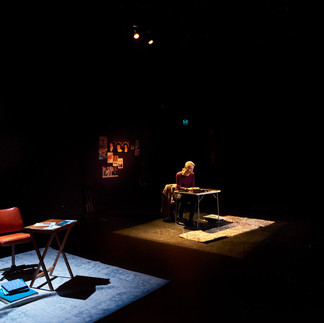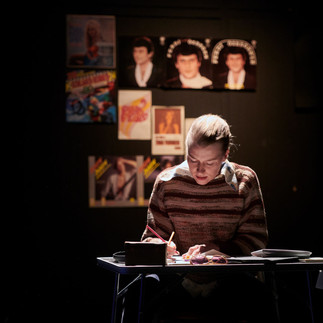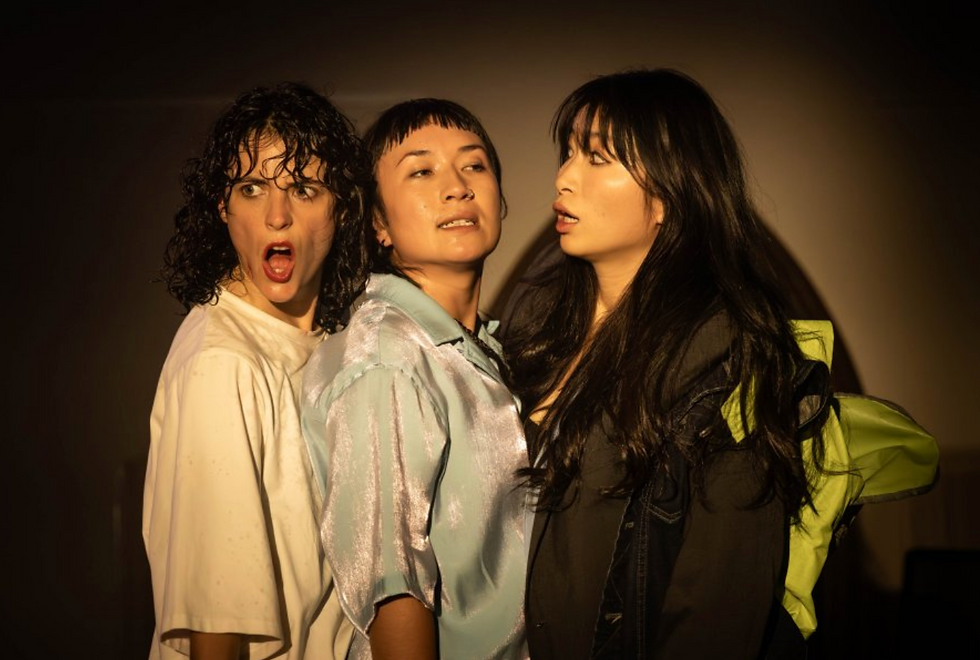Review: She Wrote the Letter at St Martin’s Theatre
- Theatre Travels

- Apr 11, 2022
- 3 min read
Review by Benjamin Lamb
She Wrote the Letter is a new play by Kieran Carroll that makes you think about our place in the world. Audiences are brought into the lives of the main protagonists on their pen-pal journey over a 30-year span. The story is based on the true experiences of Ute Dahlke and Tania McNaughton, the latter of whom plays herself in She Wrote the Letter. As a schoolkid in New Zealand, Tania wrote to Ute, a pen-pal in Germany, with the two quickly becoming the best of friends, the play following their friendship from then to the current day.
We first experience the dynamic of the pair as they read each other’s letters aloud, detailing all the topics teenage girls love to chat about; boys, parties, and the coolest music. It’s immediately clear that Ute’s grasp on the world is vastly different to that of Tania’s, growing up in Germany during the time of the East West divide. Maria Nordenberg (Ute) does a marvellous job in indicating the divide through speaking a large portion of the first few scenes in German. The suffering and pain that many Germans went through during this time was detailed at points throughout the almost 90-minute play, an area that is often left out of curriculum in today’s schools, but definitely needs to be included. A prior knowledge of what happened would definitely be useful to fully understand She Wrote the Letter.
Tania and Ute’s first meeting occurs midway throughout the play, and this is where the stage direction and lighting designs truly shine through. Tania goes through a long-winded Visa process to visit Ute, and when arriving in Germany, they are unable to find each other, the dark lighting surrounds and dull spotlight on Tania truly helps illustrate the anxiety ruminating from the character, and you are left feeling scared for her. The acting by Tania at this point was phenomenal as well, you truly feel you are watching a teenager lost in another country, based on gestures and facial expressions alone, you are transported to Germany along with her and failed journey to find Ute.
As She Wrote the Letter continues, we experience important moments of Tania and Ute’s lives, them getting married, having children, and finally meeting for the very first time.
Throughout the remainder of the play, at points, it becomes unclear how Ute and Tania are contacting one another. With few real-life meetings taking place, phone calls not occurring until later in their friendship, and notable mentions of the “need to write”, Ute and Tania still converse to one another aloud, and often face to face, and it’s unclear whether they are reading letters, and if they were doing so, some further stage direction or lighting to indicate a divide would be effective for audiences to fully be engulfed with the story of friendship.
We hear tales of family, and the further struggles and differences between life in New Zealand and life in Germany. Their children have problems that show the divide, and the dynamic between each character and their respective husbands also shines a light on the privilege we have in the oceanic region.
The play begins to close with a full-family meeting between the pair, and Tania and Ute chat about the future, and all the experiences they are still yet to have, but it closes with a tag scene in where the pair are talking on Skype, marvelling at the speed they can converse compared to the wait needed for letters back in the day. It’s a funny moment that leaves the audience in a great mood.
Tania McNaughton and Maria Nordenborg’s chemistry is unrivalled, their relationship blossoms throughout the play, and you are truly left feeling you have seen the journey of two strangers that became friends, even though they were on the other ends of the planet.
If you’re looking for something that’s going to make you think about the world a little bit differently, look no further than She Wrote the Letter.
Images Supplied




















